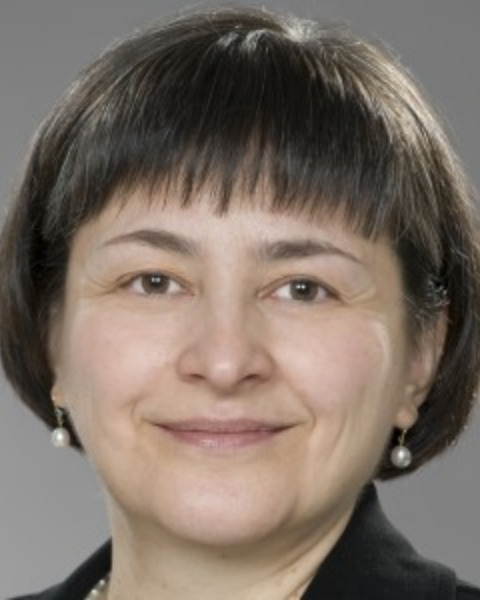Back
Research Report
Platform Presentations: Session 1
RELIABILITY OF THE FUNCTIONAL SYMMETRY OBSERVATION SCALE, VERSION 2 IN INFANTS WITH CONGENITAL MUSCULAR TORTICOLLIS
Saturday, October 28, 2023
10:30 AM – 10:45 AM CST
Location: Room 207, 2nd Floor, CHI Convention Center
Purpose/Hypothesis: The Functional Symmetry Observation Scale, Version 2 (FSOS-V2) is a new standardized, video-based assessment instrument with established content validity that quantifies symmetry in spontaneous movement and posture exhibited by infants with congenital muscular torticollis (CMT) during play, movement transitions, and locomotion. The purpose of this study was to examine the reliability of the FSOS-V2 and determine its minimal detectable change (MDC). We expected to obtain the intraclass correlation coefficients ICC(3,1)=0.90 and ICC(2,1)=0.80 or greater as the estimates of intrarater and interrater reliability, respectively. Minimal acceptable coefficients were identified as ICC(3,1)=0.70 and ICC(2,1)=0.65.
Number of Subjects: Fifty infants with CMT.
Materials/Methods: This study was funded in part by the APTA Pediatrics Research Grant 1. Participants were recruited from two Cranial Technologies, Inc. clinics. The inclusion criteria were age birth to 18 months and the diagnosis of CMT. Older infants and those diagnosed with nonmuscular torticollis or a neurologic or neuromuscular disorder were excluded. Parents handled their infants during filming performed using a standardized procedure. Four experienced physical therapists underwent 12 hours of FSOS-V2 administration and scoring training. They scored 50 videos on two occasions, at least 4 weeks apart. Raters were blind to the first set of scores during the second viewing. The FSOS-V2 record form consisted of 4 positional sections (supine, prone/quadruped, sitting, and standing), with each section containing 8 items scored on a 5-point ordinal scale from 0 to 4. Positional scores were added to obtain the total score. Data were analyzed using the IBM SPSS Statistics for Windows, Version 28.0 (Armonk, NY: IBM Corp.).
Results: Thirty-eight male and 12 female infants, age range 1-14.5 months, 28 with left and 22 with right torticollis, completed the study. Intrarater reliability estimates were moderate to good, ranging from ICC(3,1)=0.70 (95% CI: 0.52-0.82) to ICC(3,1)=0.78 (95% CI: 0.64-0.87). Interrater reliability estimates were poor to moderate, with ICC(2,1)=0.54 (95% CI: 0.37-0.69) obtained for the first scoring and ICC(2,1)=0.40 (95%CI: 0.19-0.60) for the second. Average MDC95 was 1.88.
Conclusions: The reliability estimates were lower than expected, with only the intrarater reliability meeting the requirement for minimal acceptable ICC. Results may have been affected by the length of scoring time, the amount of observation detail, and a training effect from extensive scoring experience during the study. While repeated administration of the FSOS-V2 by the same therapist may be clinically useful, the next steps should include the development of a shorter, more reliable version of the scale, its pilot testing, and evaluation of its responsiveness to change.
Clinical Relevance: The FSOS-V2 is the first torticollis-specific assessment instrument that, unlike other available measures, captures the effects of CMT on symmetry in spontaneous movement and posture of the infant’s entire body. Establishing the psychometric properties of this tool is vital for its application in pediatric clinical practice.
Number of Subjects: Fifty infants with CMT.
Materials/Methods: This study was funded in part by the APTA Pediatrics Research Grant 1. Participants were recruited from two Cranial Technologies, Inc. clinics. The inclusion criteria were age birth to 18 months and the diagnosis of CMT. Older infants and those diagnosed with nonmuscular torticollis or a neurologic or neuromuscular disorder were excluded. Parents handled their infants during filming performed using a standardized procedure. Four experienced physical therapists underwent 12 hours of FSOS-V2 administration and scoring training. They scored 50 videos on two occasions, at least 4 weeks apart. Raters were blind to the first set of scores during the second viewing. The FSOS-V2 record form consisted of 4 positional sections (supine, prone/quadruped, sitting, and standing), with each section containing 8 items scored on a 5-point ordinal scale from 0 to 4. Positional scores were added to obtain the total score. Data were analyzed using the IBM SPSS Statistics for Windows, Version 28.0 (Armonk, NY: IBM Corp.).
Results: Thirty-eight male and 12 female infants, age range 1-14.5 months, 28 with left and 22 with right torticollis, completed the study. Intrarater reliability estimates were moderate to good, ranging from ICC(3,1)=0.70 (95% CI: 0.52-0.82) to ICC(3,1)=0.78 (95% CI: 0.64-0.87). Interrater reliability estimates were poor to moderate, with ICC(2,1)=0.54 (95% CI: 0.37-0.69) obtained for the first scoring and ICC(2,1)=0.40 (95%CI: 0.19-0.60) for the second. Average MDC95 was 1.88.
Conclusions: The reliability estimates were lower than expected, with only the intrarater reliability meeting the requirement for minimal acceptable ICC. Results may have been affected by the length of scoring time, the amount of observation detail, and a training effect from extensive scoring experience during the study. While repeated administration of the FSOS-V2 by the same therapist may be clinically useful, the next steps should include the development of a shorter, more reliable version of the scale, its pilot testing, and evaluation of its responsiveness to change.
Clinical Relevance: The FSOS-V2 is the first torticollis-specific assessment instrument that, unlike other available measures, captures the effects of CMT on symmetry in spontaneous movement and posture of the infant’s entire body. Establishing the psychometric properties of this tool is vital for its application in pediatric clinical practice.

Mary Rahlin, PT, DHS, PCS
Associate Professor
Rosalind Franklin University of Medicine and Science
North Chicago, Illinois- BS
Bernadette Sarmiento, PT
Independent Practitioner
Skokie, Illinois

.png)
.png)
.png)
.png)
.png)
.png)
.png)